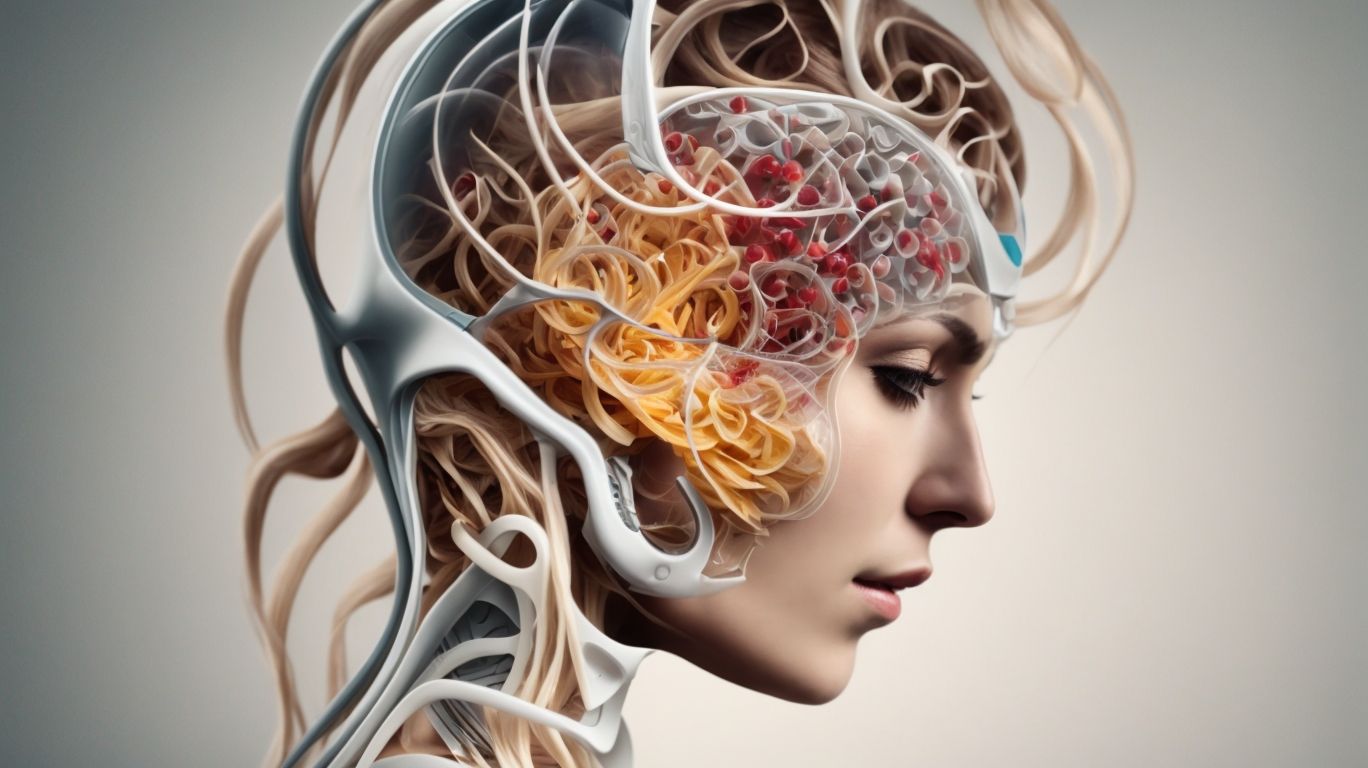Have you ever wondered how your body knows where it is in space, or how you maintain your balance while walking or standing? The answer lies in the fascinating vestibular sense.
In this article, we will explore the functions and mechanisms of the vestibular sense, its role in balance and coordination, spatial orientation, postural control, and its connection to other senses like the auditory and visual systems.
We will also delve into what happens when the vestibular sense malfunctions, including symptoms, causes, diagnosis, and treatment options. Join us on this journey to understand this crucial aspect of human perception in the realm of AP Psychology.
Contents
- 1 What Is the Vestibular Sense?
- 2 What Are the Functions of the Vestibular Sense?
- 3 What Are the Mechanisms of the Vestibular Sense?
- 4 How Is the Vestibular Sense Related to Other Senses?
- 5 What Happens When the Vestibular Sense Malfunctions?
- 6 Frequently Asked Questions
- 6.1 What is the vestibular sense and why is it important in AP Psychology?
- 6.2 How does the vestibular sense function?
- 6.3 What are the mechanisms involved in the vestibular sense?
- 6.4 How does the vestibular sense develop?
- 6.5 What are some common disorders associated with the vestibular sense?
- 6.6 How can a better understanding of the vestibular sense benefit individuals?
What Is the Vestibular Sense?
The vestibular sense refers to the sensory system responsible for providing information about body posture, spatial orientation, and movement.
This complex system comprises structures within the inner ear, including the semicircular canals and otolith organs, which detect changes in head position and acceleration.
- These sensory inputs play a crucial role in maintaining balance, coordination, and equilibrium, allowing individuals to navigate their surrounding environment with ease.
- Vestibular sense also contributes to the integration of sensory information from other systems, such as vision and proprioception, to create a comprehensive perception of one’s surroundings.
Individuals with vestibular disorders may experience symptoms like dizziness, vertigo, and impaired spatial awareness, highlighting the significance of this sense in everyday functioning.
What Are the Functions of the Vestibular Sense?
The functions of the vestibular sense encompass the maintenance of balance, interpretation of sensory information, and coordination with the brain to process spatial cues and movements.
How Does the Vestibular Sense Help with Balance and Coordination?
The vestibular sense plays a crucial role in maintaining balance and coordination by detecting movement, responding to gravitational forces, and coordinating with brain regions like the cerebellum and cortical areas.
Through its intricate network of sensory receptors located in the inner ear, the vestibular system is able to detect changes in head position and motion, allowing the body to adjust and maintain equilibrium in various environments.
The vestibular sense is closely tied to spatial awareness and proprioception, providing essential information to the brain for spatial orientation and movement planning.
This complex sensory system ensures that individuals can navigate their surroundings confidently and efficiently, even in challenging conditions.
How Does the Vestibular Sense Contribute to Spatial Orientation?
Spatial orientation is facilitated by the vestibular sense through the integration of spatial aspects, self-location awareness, and the creation of a spatial representation from a first-person perspective that enhances bodily self-consciousness.
The vestibular sense, a sensory system located in the inner ear, plays a crucial role in maintaining balance and spatial awareness. By detecting motion and gravitational forces, it helps the body understand its position in space.
This intricate system communicates with the brain to interpret signals related to movement and orientation, allowing individuals to navigate their surroundings seamlessly. Through this process, the vestibular sense aids in coordinating eye movements, stabilizing posture, and ensuring a harmonious interaction between the body and its environment.
What Role Does the Vestibular Sense Play in Postural Control?
The vestibular sense influences postural control by contributing to vestibular effects, enabling mental spatial transformations, enhancing self-motion perception, integrating multisensory signals, and involving brain regions like the temporal junction.
Postural control is crucial for maintaining balance and stability in various activities, such as walking, running, and even sitting. The vestibular sense plays a pivotal role in this aspect of human movement as it provides essential information to the brain regarding the body’s position in space and its orientation relative to gravity. Through intricate mechanisms, the vestibular system assists in adjusting muscle tone and posture to counteract external forces and maintain equilibrium.
What Are the Mechanisms of the Vestibular Sense?
The mechanisms of the vestibular sense involve intricate processes of vestibular processing, somatosensory integration, interoception, multisensory coordination, and transmission of motor signals for coordinated movements.
These mechanisms are crucial for maintaining balance and spatial orientation in various environments. The vestibular system comprises the inner ear, vestibular nerve, and brain regions such as the cerebellum and parietal cortex. It plays a vital role in detecting head movement, gravitational forces, and linear acceleration. Through sensory input from the semicircular canals and otolith organs, the vestibular system assists in stabilizing gaze, posture, and gait. This sensory information is integrated with somatosensory feedback from proprioceptors, providing a comprehensive understanding of body position and movement.
How Do the Inner Ear and Vestibular System Work Together?
The inner ear and vestibular system collaborate seamlessly, combining inputs from visual cues, spatial parameters, unisensory vestibular cortex, and electrophysiological recordings to maintain spatial awareness and balance.
Within the intricate network of the auditory and vestibular systems lie specialized structures like the semicircular canals, otolithic organs, and vestibular nuclei, all working in perfect harmony to process and integrate information crucial for equilibrium and spatial orientation.
The vestibular system plays a vital role in detecting head movements, aiding in gaze stabilization, and generating reflexive actions to preserve balance when faced with sudden shifts in body position.
What Are the Different Types of Vestibular Receptors?
The vestibular system comprises various receptors, including those involved in somatosensory processing, neural computations, communication via the vestibular nerve, and interactions with the central nervous system.
One of the key types of vestibular receptors is the hair cells, which are responsible for detecting head movements and orientation in relation to gravity.
These hair cells are located within the otolithic organs, utricle, and saccule, and the semicircular canals, providing crucial sensory input for balance and spatial orientation.
Once activated, these receptors generate signals that are transmitted through the vestibular nerve to the brainstem and cerebellum, where the neural processing of vestibular information occurs.
How Do the Vestibular Receptors Send Signals to the Brain?
Vestibular receptors transmit signals to the brain through pathways involving thalamic nuclei, the cerebellum, sensory perception mechanisms, and interactions with visual cues for comprehensive spatial processing.
When the vestibular receptors detect changes in head position or movement, they generate electrical signals that are then transmitted through the vestibular nerve to the brainstem. From here, the signals reach the thalamic nuclei, which act as relay stations directing the information to the cerebral cortex. The cerebellum plays a crucial role in integrating these signals with motor commands to maintain balance and coordination.
These signals are also routed through sensory perception pathways, including the parietal lobe, where the brain processes information related to spatial orientation and body awareness. By incorporating visual cues, such as landmarks or objects, the brain achieves a more detailed understanding of the environment and spatial relationships.
How Is the Vestibular Sense Related to Other Senses?
The vestibular sense interacts with other senses by processing multisensory signals, establishing spatial references, creating neural representations, and collaborating with the auditory system for integrated sensory experiences.
Through this intricate integration, the vestibular sense plays a crucial role in our perception of motion and orientation. It enables us to maintain balance, navigate the physical environment, and coordinate movements seamlessly. By combining input from the inner ear, visual cues, and proprioceptive feedback, the brain can construct a coherent understanding of our position in space. This sensory harmony not only influences motor skills and spatial cognition but also contributes significantly to our overall sense of well-being and cognitive function.
What Is the Connection Between the Vestibular Sense and the Auditory System?
The relationship between the vestibular sense and the auditory system involves mechanisms like linear acceleration perception, signals from semicircular canals, responses from otolith organs, and detection of rotational accelerations for comprehensive sensory processing.
Linear acceleration perception, a crucial aspect of vestibular function, is responsible for perceiving changes in velocity or direction when moving in a straight line. This process integrates information from the inner ear’s vestibular organs, mainly the utricle and saccule, with the brain for accurate spatial orientation.
Signaling from the semicircular canals, structures filled with fluid, aids in detecting rotational movements and maintaining balance. These canals are oriented in different planes, allowing the brain to process angular accelerations and adjust body position accordingly.
The otolith organs, comprising the utricle and saccule, respond to gravitational forces and linear movements. They provide essential information about head tilt, linear accelerations, and overall head position in space.
Rotational acceleration detection helps in distinguishing between various types of motion and enables the brain to coordinate sensory inputs for smooth movement and balance.
How Does the Vestibular Sense Interact with the Visual System?
The vestibular sense collaborates with the visual system through pathways involving the vestibular nerve, central nervous system interactions, utilization of visual cues, and consideration of spatial parameters for coordinated sensory integration.
The vestibular nerve serves as a crucial conduit in this intricate process, relaying information from the inner ear to the brain. This information is then processed by various regions of the brain, including the cerebellum and the vestibular nuclei, to ensure seamless coordination between balance and visual perception.
- Through the utilization of visual stimuli, such as landmarks and horizon lines, the visual system aids in calibrating spatial orientation and enhancing depth perception, strengthening the overall sensory experience.
Integration of spatial parameters involves the brain’s ability to merge incoming signals from the vestibular and visual systems, helping individuals maintain equilibrium, navigate environments, and respond reflexively to external stimuli.
What Happens When the Vestibular Sense Malfunctions?
When the vestibular sense malfunctions, individuals may experience disruptions in cognitive awareness, challenges with muscle memory, manifestations of vestibular disorders, and alterations in spatial volume perception.
These disruptions in cognitive awareness can lead to difficulties in concentrating, attention deficits, and even memory issues. Challenges with muscle memory may affect one’s coordination, balance, and fine motor skills, impacting daily activities and movements.
The manifestations of vestibular disorders vary from vertigo and dizziness to nausea and trouble with spatial orientation and balance. Individuals might struggle to navigate their surroundings, miss steps, or even experience a fear of falling.
Alterations in spatial volume perception may result in feelings of disorientation, sensitivity to motion, and spatial disconnection.
What Are the Symptoms of Vestibular Dysfunction?
Symptoms of vestibular dysfunction include disturbances in the perception of gravitational fields, alterations in spatial coordinates, disruptions in the visual system, and impairments in multisensory integration.
Gravitational field perception anomalies often manifest as feelings of dizziness, vertigo, or a sense of unsteadiness. Individuals with vestibular dysfunction may experience difficulty maintaining balance and coordination, leading to frequent falls or stumbling. Changes in spatial coordinate processing can result in spatial disorientation, making it challenging for affected individuals to navigate their surroundings accurately. Visual system disturbances may present as blurred vision, sensitivity to light, or involuntary eye movements known as nystagmus.
What Are the Possible Causes of Vestibular Dysfunction?
Vestibular dysfunction can stem from various factors such as impairments in motor control, alterations in bodily self-consciousness, distortions in proprioceptive signals, and issues within the vestibular organs.
Motor control deficiencies may lead to challenges in coordinating movements and maintaining balance, contributing to vestibular dysfunction. Disruptions in bodily self-consciousness can affect the brain’s perception of spatial orientation and body position, further exacerbating symptoms. Proprioceptive signals, responsible for conveying information about body position and movement, could become distorted, causing confusion within the vestibular system. Malfunctions within the vestibular organs, including the inner ear structures that regulate balance, can disrupt the equilibrium and coordination mechanisms. Understanding these interconnected factors is crucial in diagnosing and treating vestibular dysfunction effectively.
How Is Vestibular Dysfunction Diagnosed and Treated?
Vestibular dysfunction is diagnosed using methods like neuroimaging, and treatments may involve vestibular rehabilitation therapy, medication regimens, or surgical interventions depending on the severity of the condition.
Neuroimaging techniques such as magnetic resonance imaging (MRI) or computerized tomography (CT) scans play a crucial role in detecting structural abnormalities in the inner ear or brain that may contribute to vestibular dysfunction.
Once diagnosed, individuals with vestibular issues might benefit from vestibular rehabilitation therapy, a specialized exercise program aimed at improving balance and reducing dizziness.
In cases where symptoms are not adequately controlled through therapy, doctors may consider prescribing medications to alleviate vertigo or nausea.
In more severe instances, surgical interventions like endolymphatic sac decompression or vestibular nerve sectioning could be necessary.
Frequently Asked Questions
What is the vestibular sense and why is it important in AP Psychology?
The vestibular sense is the sensory system responsible for maintaining our sense of balance and spatial orientation. It is important in AP Psychology because it plays a crucial role in our overall perception of the world and has implications for our physical and mental well-being.
How does the vestibular sense function?
The vestibular sense is located in the inner ear and uses sensory receptors called hair cells to detect movement and changes in the position of the head. These signals are then sent to the brain for processing and interpretation.
What are the mechanisms involved in the vestibular sense?
The vestibular sense is closely connected to the visual and proprioceptive systems, which help to maintain balance and spatial awareness. The vestibular system also works in tandem with the cerebellum, which helps coordinate and regulate movement.
How does the vestibular sense develop?
The vestibular sense begins to develop in utero and continues to mature throughout childhood. It is influenced by both genetic and environmental factors, and can be impacted by injuries, illnesses, and aging.
What are some common disorders associated with the vestibular sense?
Some common disorders associated with the vestibular sense include vertigo, motion sickness, and Meniere’s disease. These conditions can cause symptoms such as dizziness, nausea, and loss of balance.
How can a better understanding of the vestibular sense benefit individuals?
A better understanding of the vestibular sense can help individuals improve their balance and coordination, reduce the risk of falls and injuries, and manage symptoms of related disorders. It can also enhance our understanding of human perception and behavior in AP Psychology.



